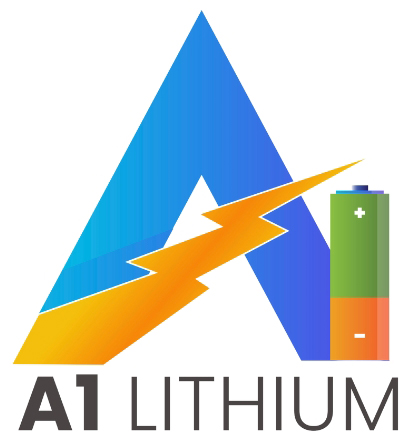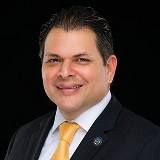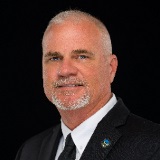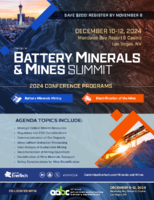Battery Minerals Mining
电池矿物的开采
Exploring the Commercialization & Processing of Critical Battery Minerals
探索重要电池矿物的商业化与处理方法
2024年12月10~11日(PST)
12月10日(二)
Registration and Morning Coffee7:30 am
BATTERY MINERALS MINING OVERVIEW
Mine Planning and the Importance of Quantifying Upstream Environmental Impacts for Battery End Users.
 Rohin Shah, Consultant Team Lead, Minviro Ltd.
Rohin Shah, Consultant Team Lead, Minviro Ltd.
This presentation will explore the critical role of mine planning in shaping environmental outcomes that affect miners, battery manufacturers, and end users. The discussion will focus on the importance of Life Cycle Assessment (LCA) in quantifying environmental impacts across the value chain. Additionally, it will cover best practices for interpreting these impacts and effectively communicating them to stakeholders across the battery supply chain.
The "Nevada Lithium Batteries and Other EV Materials Loop" Regional Technology and Innovation Hub: Building a Globally Competitive Domestic Supply Chain from Extraction, to Processing, to Advanced Manufacturing, to Recycling
 Fred Steinmann, DPPD, Director, University Center for Economic Development, College of Business, University of Nevada
Fred Steinmann, DPPD, Director, University Center for Economic Development, College of Business, University of Nevada
A discussion on how the "Nevada Tech Hub" is seeking to create a self-contained supply chain across Nevada's emerging lithium batteries, critical elements, and other EV materials industry sector, from extraction to processing to advanced manufacturing to recycling, through targeted business creation and expansion efforts and through strategic collaborations to meet the nation's national security, climate mitigation, and economic diversification needs and goals.
ESG in Battery Supply Chains: When Aspiration Conflicts with Reality
 Adele Rouleau, ESG & Critical Minerals Lead, SFA Oxford
Adele Rouleau, ESG & Critical Minerals Lead, SFA Oxford
The number of ESG-related regulations impacting global battery supply chains has increased substantially over the past decade. With growing scrutiny from mine to metal, companies are now increasingly exposed to the risks of regulatory non-compliance, which can take several forms: from penalties associated with incorrect reporting, to activist NGOs holding corporations to account and downstream stakeholders being held responsible for incidents at the upstream level.
Session Wrap-Up
Parvin Adeli, PhD, Manager, Batteries, Nickel Institute
Adele Rouleau, ESG & Critical Minerals Lead, SFA Oxford
Fred Steinmann, DPPD, Director, University Center for Economic Development, College of Business, University of Nevada
Rohin Shah, Consultant Team Lead, Minviro Ltd.
Grand Opening Coffee Break in the Exhibit Hall with Poster Viewing (Sponsorship Opportunity Available)10:00 am
Mining and the Lithium Supply Chain in Nevada
 Caleb Cage, President, Arc Dome Strategies
Caleb Cage, President, Arc Dome Strategies
Nevada is a leader in the global lithium supply chain. Mining is a critical part of Nevada's place in this supply chain, and our industry has benefited from the state's long history in exploration and mining projects. This talk will cover commercialization, local supply of raw materials, and collaboration facilitated by the Nevada Battery Coalition that is driving development and cooperation.
Technology Development Roadmaps for Battery Minerals Processing
 Aki Fujita, Co-Head, Research & Consulting, Nomura Research Institute America, Inc.
Aki Fujita, Co-Head, Research & Consulting, Nomura Research Institute America, Inc.
Establishing a battery supply chain in North America will require the development of many technologies, including lithium extraction, nickel sulfate refining, and pCAM refining. In particular, "battery grade" often requires a high level of quality and is frequently a barrier to mass production. This presentation will discuss approaches and solutions for achieving this goal.
 Presentation to be Announced
Presentation to be AnnouncedNetworking Lunch12:00 pm
Dessert Break12:30 pm
LITHIUM MINING AND PROCESSING
The Promise and Challenges of Recovering Critical Minerals from Salton Sea Geothermal Brines
 Michael McKibben, PhD, Research Professor, Earth & Planetary Sciences, University of California Riverside
Michael McKibben, PhD, Research Professor, Earth & Planetary Sciences, University of California Riverside
Salton Sea geothermal geothermal brines are capable of producing at a minimum the following metals at 90% recovery efficiency:
Metal ppm Rate
Mn 1500 162,000 tpy
Li 198 21,384 tpy
Zn 500 54,000 tpy
Challenges to producing these geothermal metals include: finding extraction media (substrates and adsorbents) that can withstand the high salinities, temperatures, and corrosive pH values; keeping the flashed brine hot and thus free of Si-Fe precipitates that can clog extraction media and injection wells; scaling-up direct lithium extraction technologies to extremely high brine flow rates; and reducing water consumption in the drought-stricken Colorado River basin.
Rhyolite Ridge Project Overview-Lithium Extraction from Sedimentary Lithium/Boron Ore
 Alex Tshibind, Senior Metallurgist, Ioneer Ltd.
Alex Tshibind, Senior Metallurgist, Ioneer Ltd.
The Ioneer Rhyolite Ridge project, located in Esmeralda County, Nevada, is a greenfield mine and production facility aiming to produce technical grades lithium carbonate and boric acid from a sedimentary deposit. Vat leaching technique will be used to extract lithium and boron using sulfuric acid as the leaching agent. The two elements will be refined through various purification processes such chemical precipitation, evaporation, and crystallization. Heat and electricity will be provided by an onsite sulfuric acid plant, thus, eliminating the need for grid connection. The presentation will overview the project's flowsheet and development decisions, which focused on minimizing environmental impact.
Session Wrap-Up
David Dreisinger, PhD, Professor, Materials Engineering, University of British Columbia
Michael McKibben, PhD, Research Professor, Earth & Planetary Sciences, University of California Riverside
Alex Tshibind, Senior Metallurgist, Ioneer Ltd.
Jesus Eduardo Escobar, Supervisor, Imperial County
Ryan E. Kelley, Supervisor, Imperial County
Refreshment Break in the Exhibit Hall with Poster Viewing (Sponsorship Opportunity Available)2:20 pm
Driving Sustainable Mobility: The Crucial Role of Innovation in Lithium Upstream
 Stefan Debruyne, Director of External Affairs, SQM International
Stefan Debruyne, Director of External Affairs, SQM International
Lithium is an essential element in the global energy transition. It's critically important to stakeholders that it is mined in a sustainable and equitable way. The presentation will look at the global lithium market and update SQM's progress on its sustainable development plan. It will highlight the crucial role innovation plays in reducing footprint and driving expansions to meet future demand in a responsible way.
Electrochemical Refining of Raw Lithium into Lithium Hydroxide or Lithium Carbonate
 David St. Angelo, MS, CTO, Operations and Technology Development, Mangrove Lithium
David St. Angelo, MS, CTO, Operations and Technology Development, Mangrove Lithium
Electrochemical refining of raw lithium is a flexible and scalable approach to produce high-purity, battery-grade lithium hydroxide or lithium carbonate. Suitable feedstocks include brines, hard rocks, clays, DLE, and battery recycling. Modular electrochemical conversion technology can co-locate near the point of extraction, battery recycling, or battery manufacturing, removing supply risks and reliance on foreign supplies. Commercial demonstration plant performance results will be presented.

How Anson is Developing Clean USA Lithium to Charge America's Future
Bruce Richardson, President, Anson Resources
Anson’s mission, through its A1 Lithium division, is to be a leader in Charging America’s Future as the United States and international communities progress toward the electrification of the global economy. A1 is at the forefront of the global energy transformation, supplying USA produced high purity lithium through a combination of eco-friendly processing methods and an environmentally responsible management philosophy. A1 Lithium’s flagship projects, The Green River Lithium and Paradox Basin Projects are located in the Paradox Basin, Utah, USA, which is potentially the largest brine resource in the country.
Session Wrap-Up
David Dreisinger, PhD, Professor, Materials Engineering, University of British Columbia
Stefan Debruyne, Director of External Affairs, SQM International
David St. Angelo, MS, CTO, Operations and Technology Development, Mangrove Lithium
Bruce Richardson, President, Anson Resources
NICKEL, COBALT, COPPER - MINING AND PROCESSING
Sustainable Deep-Sea Harvesting for Critical Battery Minerals Leveraging Battery-Powered Robots
 Oliver Gunasekara, Co-Founder & CEO, Impossible Metals
Oliver Gunasekara, Co-Founder & CEO, Impossible Metals
To achieve net zero emission goals there is a growing need for large quantities of critical metals like nickel, cobalt, copper, and manganese. Impossible Metals has invented new technology which preserves and protects the marine habitat, while also reducing the cost of extraction.
Battery Metals and Biomining-Building a Sustainable Value Chain for Strategic Decarbonization Ecosystem
 Homayoun Fathollahzadeh, PhD, Founder & CEO, Hominity
Homayoun Fathollahzadeh, PhD, Founder & CEO, Hominity
Addressing the bottlenecks of deploying sustainable processing in the mining and battery metals supply chain at the necessary speed and scale is rapidly becoming more urgent for industry, government, and financial and/or non-financial stakeholders. This presentation will discuss biotech and biomining potential in extraction and processing of battery metals where lower environmental, waste, and carbon footprints offer a major economic and environmental value with a positive social license to operate.
Sponsored Presentation (Opportunity Available)5:00 pm
Networking Reception in the Exhibit Hall with Poster Viewing6:00 pm
Close of Day7:00 pm
12月11日(三)
Registration and Morning Coffee7:45 am
NICKEL, COBALT, COPPER - MINING AND PROCESSING
Sponsored Presentation (Opportunity Available)8:30 am
The Atlas Materials Process for Low Carbon Nickel and Cobalt Recovery from Imported Nickel Ores for Battery Chemical Manufacture
 David Dreisinger, PhD, Professor, Materials Engineering, University of British Columbia
David Dreisinger, PhD, Professor, Materials Engineering, University of British Columbia
Nickel saprolite ores typically contain 1.5-2% Ni with <0.1% Co and are processed using pyrometallurgical techniques. The existing processes are energy-intensive and produce large amounts of slag and carbon dioxide emissions. The Atlas Materials Process extracts nickel, cobalt, magnesium, and other elements to produce a nickel/cobalt-containing mixed hydroxide precipitate for battery chemical manufacture, a silica residue for cement making and a variety of magnesium product streams.
Electrifying the Future: Nickel's Role in Advancing Battery Technology and Markets
 Parvin Adeli, PhD, Manager, Batteries, Nickel Institute
Parvin Adeli, PhD, Manager, Batteries, Nickel Institute
With the surge of electric vehicles (EVs), high capacity, high energy density materials are essential to fulfill long-distance travel. Ni-rich cathodes are dominant owing to their high energy density and good rate capability. Batteries are the fastest growing market for nickel, and the Nickel Institute (NI) is quite active in this space. This presentation provides an overview of the NI Battery Program followed by the current global EV market and the share of nickel-based battery chemistries. Furthermore, a discussion on the patent landscape and the latest technology developments is included.
Sponsored Presentation (Opportunity Available)9:50 am
Session Wrap-Up
Stefan Debruyne, Director of External Affairs, SQM International
Tom Fairlie, Senior Sustainability Manager, Cobalt Institute
David Dreisinger, PhD, Professor, Materials Engineering, University of British Columbia
Parvin Adeli, PhD, Manager, Batteries, Nickel Institute
Coffee Break in the Exhibit Hall with Poster Viewing (Sponsorship Opportunity Available)10:25 am
PLENARY KEYNOTE
How GM Is Driving Battery Development and Enabling an All-EV Future
 Kurt Kelty, Vice President, Battery Cell & Pack, General Motors
Kurt Kelty, Vice President, Battery Cell & Pack, General Motors
GM has established a foundation to accelerate the investment in and development of battery technology with a robust supply chain to support its growth over the next decade. In this talk, Kurt will discuss GM’s strategies for investing in new technologies and how its in-house capabilities enhance those efforts, with an overview and rationale behind key investments made to date. He will also provide insights on the company’s approach and significant milestones moving forward.
Steps Needed to Drastically Cut EV Operating Costs with V2G-Enabled Battery Packs
 Anil Paryani, Executive Engineering Director, Advanced EV Program, Ford
Anil Paryani, Executive Engineering Director, Advanced EV Program, Ford
Electricity prices are rising faster than gasoline. Simultaneously, clean solar energy is becoming available but remains underutilized. EV sales growth is flat. Why not charge EVs with excessive solar and then support the grid in times of challenge? Government policy and battery cycle life hinder the rollout of existing vehicle-to-grid (V2G) technology. This paper explores necessary electricity price changes and battery cycle life requirements needed to increase EV sales growth.
How Redwood Materials Is Building a Sustainable Battery Supply Chain
 Colin Campbell, PhD, CTO, Redwood Materials
Colin Campbell, PhD, CTO, Redwood Materials
Redwood Materials is building a domestic supply chain for battery materials that reduces the environmental impact, costs, and supply chain risks of lithium-ion batteries. With the rise of electric vehicles and clean energy technologies comes both a challenge and opportunity to recover these materials, which can be nearly infinitely reused, to sustainably build tomorrow’s lithium-ion batteries. In his talk, Colin will discuss Redwood’s technology and commercial strategy, highlighting the company’s Nevada campus which today is recycling the equivalent of 250,000 EVs worth of material a year and manufacturing cathode active material in the U.S. for the first time.
Networking Lunch (Sponsorship Opportunity Available)12:15 pm
Dessert Break in the Exhibit Hall with Poster Viewing (Sponsorship Opportunity Available)1:15 pm
Close of Conference2:00 pm
* 活动内容有可能不事先告知作更动及调整。










